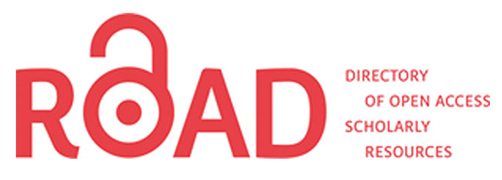Processes in the Immateriality. the Case of Databending
DOI:
https://doi.org/10.24215/24691488e039Keywords:
Unsubstantial, form, glitchAbstract
A key issue in the creative processes of material culture is the acquisition of skills through experience and craft. In the creative work that is done in visual arts, a large part of these skills and experiences is born from the same material from which one works. However, in the case of work with digital media, this materiality has an unsubstantial nature. Digital images generate a new situation with respect to the work previously performed with analogue media. As a case study we will address the development of digital images formed by a process known as databending.Downloads
References
Adorno, T. W. (2003). Filosofía de la nueva música. Madrid, España: Akal.
Adorno, T. W. (2013). Estética (1958/59). Ciudad Autónoma de Buenos Aires, Argentina: Las Cuarenta.
Buck–Morss, S. (1981). Origen de la dialéctica negativa. Ciudad de México, México: Siglo Veintiuno.
Groys, B. (2016). Arte en flujo. Ciudad Autónoma de Buenos Aires, Argentina: Caja Negra.
Flusser, V. (2015). El universo de las imágenes técnicas. Ciudad Autónoma de Buenos Aires, Argentina: Caja Negra.
Kozak, C. (2012). Tecnopoéticas argentinas. Ciudad Autónoma de Buenos Aires, Argentina: Caja Negra.
Maldonado, T. (1999). Lo real y lo virtual. Barcelona, España: Gedisa.
Moradi, I. (2004). Glitch Aesthetics. Recuperado de http://www.organised.info/wp-content/uploads/2016/08/Moradi-Iman-2004-Glitch-Aesthetics.pdf
Downloads
Published
How to Cite
Issue
Section
License
The acceptance of the manuscript by the magazine means the non-exclusive cession of the property rights of the authors in favour of the editor, who allows the reuse, after publication (post print), under a license Attribution-NonCommercial-NoDerivatives 4.0 International. According to these terms, the material can be copied and redistributed by any means or in any format as long as a) the author and original source of the publication are quoted (magazine and URL of the work), access to the license is provided and whether changes have been made is mentioned; and b) the material is not used for commercial purposes.
The cession of non-exclusive rights means that after the publication (post print) in Arte e Investigación the authors can publish their work in any language, means and format; in such cases it must be mentioned that the material was originally published in this magazine. Such cession also means the authorization of the authors for the work to be collected by SEDICI, the institutional archive of the National University of La Plata, and to be spread in the databases that the editorial team considers appropriate to increase the visibility of the publication and its authors.
Moreover, the magazine encourages the authors to deposit their productions in other institutional and thematic archives under the principle that offering the society the scientific and academic production without any restrictions contributes to a greater exchange of the global knowledge.


































